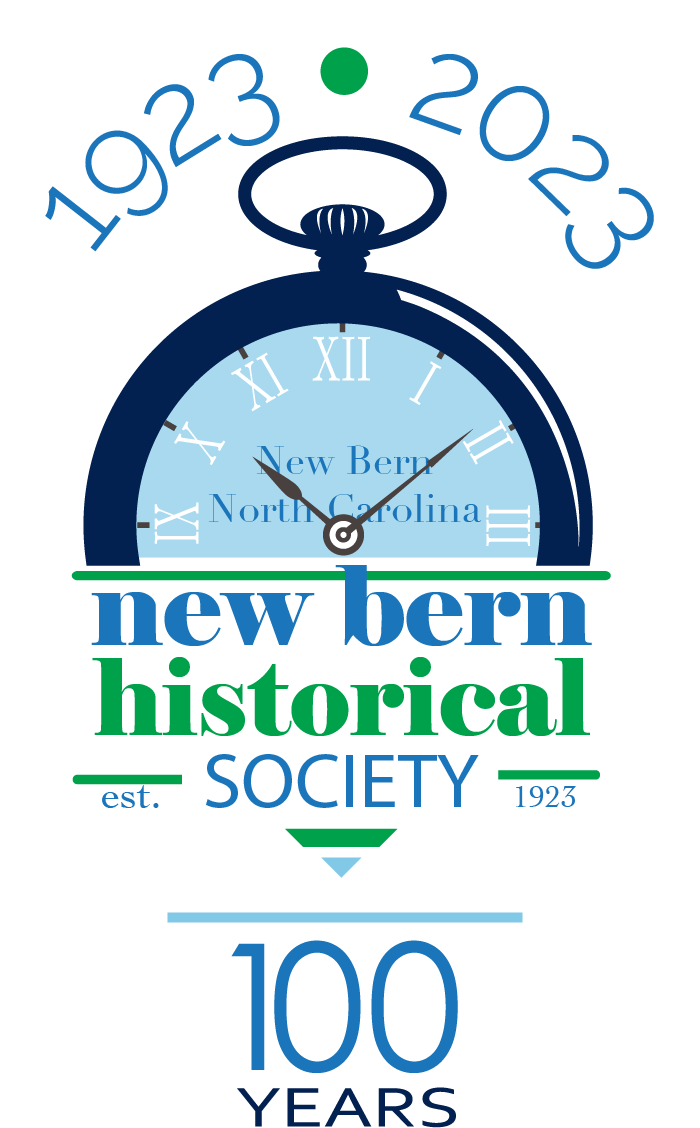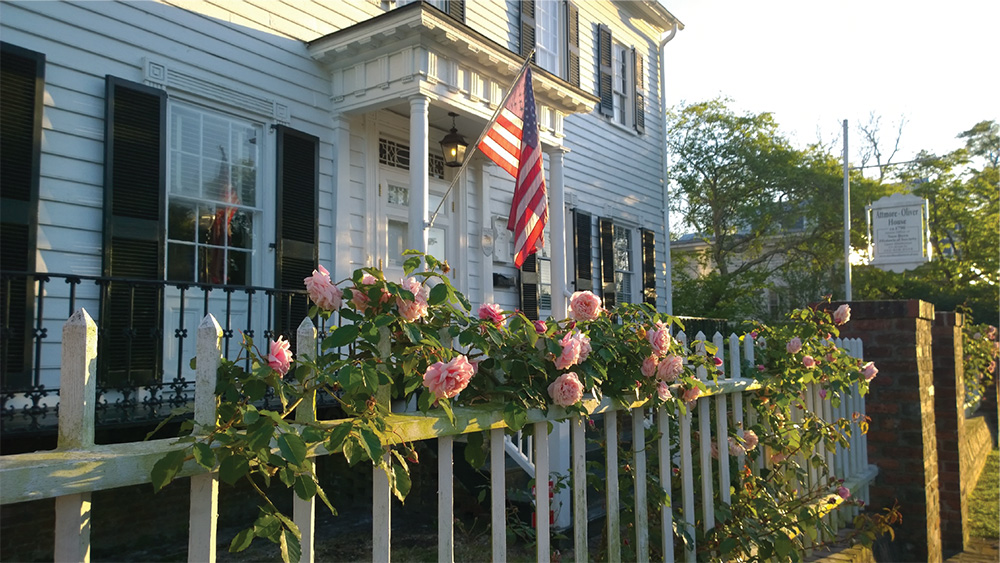 On January 1, 1867, a great celebration took place in New Bern. A tournament or “Ring” was held in which twenty-two knights, representing New Bern, Wilson and Kinston competed on a race track set up on the snow-covered banks of the Neuse River. Stands were erected for judges, the orator and the musicians, and wagons were provided on the outside of the track for spectators. At 11 am approximately 3,000 spectators, guests and participants left the Gaston House Hotel accompanied by the New Bern Comet Band and proceeded to the grounds just beyond the city. The Knights were led to the arena by the Chief Marshal, Colonel John D. Whitford, who wore a yellow silk sash with a red rosette on the shoulder. His aides wore red sashes with white rosettes. The Knights, splendidly arrayed with fancy uniforms and bearing such names as Knight of Newbern, Knight of the Rolling Neuse, and Knight of Craven, were led to the speaker of the day, Ex-Governor Zebulon Vance.
On January 1, 1867, a great celebration took place in New Bern. A tournament or “Ring” was held in which twenty-two knights, representing New Bern, Wilson and Kinston competed on a race track set up on the snow-covered banks of the Neuse River. Stands were erected for judges, the orator and the musicians, and wagons were provided on the outside of the track for spectators. At 11 am approximately 3,000 spectators, guests and participants left the Gaston House Hotel accompanied by the New Bern Comet Band and proceeded to the grounds just beyond the city. The Knights were led to the arena by the Chief Marshal, Colonel John D. Whitford, who wore a yellow silk sash with a red rosette on the shoulder. His aides wore red sashes with white rosettes. The Knights, splendidly arrayed with fancy uniforms and bearing such names as Knight of Newbern, Knight of the Rolling Neuse, and Knight of Craven, were led to the speaker of the day, Ex-Governor Zebulon Vance.
Unlike jousting, in which a rider tries to knock down another rider, in a Ring or Tilt, a horseman rides at full gallop and attempts to insert his lance in small metal rings suspended overhead. On this day, five courses were run over several hours. The winner of the overall contest was the Knight of Newbern, Joseph M. Smith, of the police department
An evening coronation followed at 10 pm. Over two hundred people attended the affair at Lowthrop Hall in the Masonic Hall Building on Hancock Street. The Knight of Newbern chose Miss Carrie McLachan of New Bern as the Queen of Love and Beauty. The three runners-up then chose their maids of honor. Zebulon Vance presented the trophy and crown. The Coronation Ball was deemed a success and continued until 2 am.
How did all of this begin? The original Ring tournaments, relics of jousting, originated in Europe, spread from France to England and finally to the American Colonies. Participants usually dressed in colorful medieval garb and assumed titles. The winner was the knight who took the greatest number of rings. The consistent themes of these tournaments were honor and chivalry. The first reported tournament in North Carolina took place at Shocco Springs on September 15, 1857, prior to the Civil War. Participants and townspeople loved the pageantry and events began to spread throughout the state. No tournaments took place during the War years, but soon a schedule of tournaments began again. A tournament in Wilmington on Feb 1, 1866 drew a large crowd, and the 1867 New Year’s Day combined tournament was so successful, that New Bern staged their own tournament and ball two weeks later. In February of 1867, they also held a tournament for children described as “chivalry in pantelets.” By 1876 the townspeople in New Bern lost interest in the tournaments. They were more interested in who was chosen as the Queen of Love and her Court, rather than in the competition itself.


